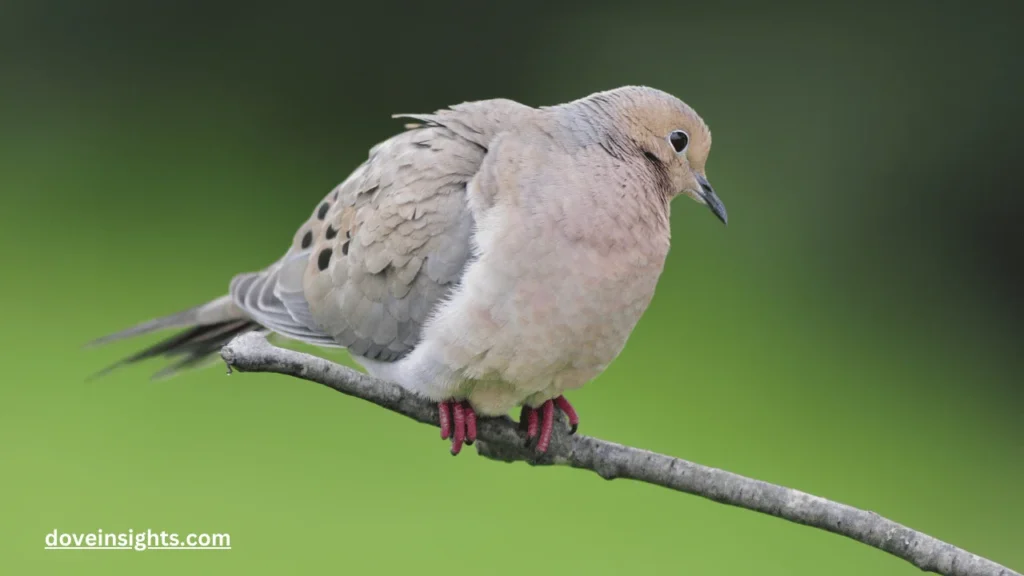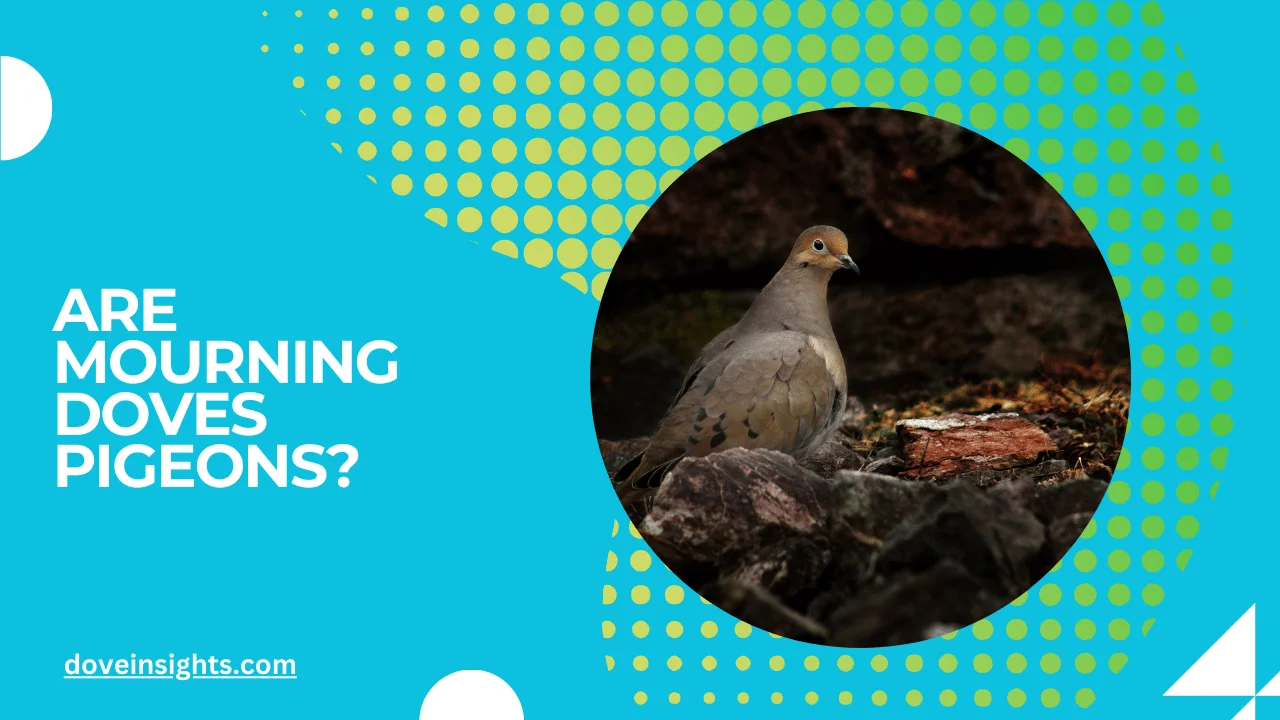Many people often associate mourning doves with pigeons, but are they really the same bird?
At first glance, the two birds do appear quite similar – they share the same family, Columbidae, and both are often seen in urban areas. However, when you take a closer look at their characteristics, behaviors, and roles in nature, the differences become clearer.
While mourning doves and pigeons may have overlapping features, such as their sleek bodies and soft cooing calls, they are distinct species with their own unique traits.
This article explores the key differences and similarities between mourning doves and pigeons, delving into their biological classification, appearance, and behavioral distinctions. Understanding these two birds is not only fascinating but also helps in appreciating the rich diversity within the pigeon family.
Let’s explore whether mourning doves are pigeons or if there’s more to their story.
Contents
- 1 Biological Classification: Mourning Doves vs. Pigeons
- 2 Physical Differences: What Sets Mourning Doves Apart?
- 3 Behavioral Differences: Mourning Doves vs. Pigeons
- 4 Habitat and Distribution: Where Do Mourning Doves and Pigeons Live?
- 5 Symbolism and Cultural Significance: Mourning Doves vs. Pigeons
- 6 Conclusion:
- 7 FAQ’s
- 7.0.1 Are mourning doves technically pigeons?
- 7.0.2 What are the main physical differences between mourning doves and pigeons?
- 7.0.3 Do mourning doves and pigeons live in the same habitats?
- 7.0.4 Are mourning doves and pigeons both found worldwide?
- 7.0.5 Do mourning doves and pigeons have the same diet?
- 7.0.6 Are mourning doves symbols of peace?
Biological Classification: Mourning Doves vs. Pigeons
The first step in understanding whether mourning doves are pigeons is to explore their biological classification. Both mourning doves and pigeons belong to the Columbidae family, which includes over 300 species of doves and pigeons. Despite this shared family, they are often classified into different genera within the family.
Mourning doves are scientifically known as Zenaida macroura, while pigeons, particularly the common city pigeon, are known as Columba livia.
Though they share the same family, the genus distinction suggests that mourning doves and pigeons are separate species. While they both belong to the Columbidae family, their differences in physical traits and behaviors set them apart, making mourning doves and pigeons distinct within this wide family.
Physical Differences: What Sets Mourning Doves Apart?
While both mourning doves and pigeons have a similar body structure, their physical appearance differs in subtle but significant ways.
Mourning doves are typically smaller and more slender compared to pigeons. They have a long, pointed tail, a narrow body, and a graceful flight style.
Their coloration is typically a soft gray or brown, with a slight iridescence on their necks, which makes them stand out among other birds.
On the other hand, pigeons, especially the common city pigeon, are generally larger, with a more robust body and a broader head. They have rounder tails and are often seen in a wider range of colors, including gray, white, and even multicolored varieties.
Pigeons tend to have a more stocky appearance with thick necks, making them visually distinct from the more streamlined mourning doves.
Behavioral Differences: Mourning Doves vs. Pigeons
Beyond their physical characteristics, mourning doves and pigeons also exhibit distinct behavioral traits. Mourning doves are typically known for their graceful flight patterns and quiet demeanor.
They are often seen soaring high in the sky or perched on tree branches, rarely engaging in aggressive interactions. Mourning doves are often associated with peace due to their calm and non-confrontational nature.
Pigeons, however, are more social and can often be seen in large groups, particularly in urban areas. They are more adaptable to human environments, and their behavior can sometimes be more assertive.
Pigeons, especially in cities, are known to roost in large numbers and can sometimes display aggressive behaviors when defending territories or competing for food.
Habitat and Distribution: Where Do Mourning Doves and Pigeons Live?
Both mourning doves and pigeons are highly adaptable to various environments, but they tend to inhabit different types of areas.
Mourning doves are commonly found in open woodlands, grasslands, and suburban areas throughout North America. They prefer areas with abundant seeds and grasses, which make up the majority of their diet.
Pigeons, especially the common city pigeon, are more urbanized and can be found in cities, towns, and industrial areas around the world.
While they also feed on seeds and grains, pigeons have become highly adapted to living in close proximity to humans, often seen nesting on buildings or man-made structures. Their ability to thrive in crowded environments sets them apart from mourning doves, who tend to prefer quieter, more rural habitats.
Symbolism and Cultural Significance: Mourning Doves vs. Pigeons

Both mourning doves and pigeons have significant roles in human culture, but the symbolism attached to each bird differs.
The mourning dove is widely recognized as a symbol of peace, love, and spirituality. Its gentle cooing and graceful flight have made it a favorite symbol in literature, art, and religion, particularly in Christianity, where the dove is associated with the Holy Spirit.
Pigeons, while also sometimes symbolic of peace, have a more ambiguous role in different cultures. In some urban contexts, pigeons are seen as pests or even symbols of resilience, as they have thrived in human-dominated environments.
While pigeons have cultural significance in many societies, especially in racing and historical messages, they do not carry the same universally peaceful connotation as mourning doves.
Conclusion:
While mourning doves and pigeons are closely related, they are not the same bird. Though both belong to the same Columbidae family, they differ in their biological classification, physical appearance, behavioral traits, habitat preferences, and even their symbolic roles in society.
Mourning doves are slender, peaceful birds, while pigeons tend to be larger, more social, and adaptable to urban environments.
By understanding these differences, we can gain a deeper appreciation for each bird and the unique roles they play in our world. So, while mourning doves and pigeons share certain traits, they are distinct species with their own identities.
FAQ’s
Are mourning doves technically pigeons?
Yes, mourning doves belong to the Columbidae family, just like pigeons. However, they are a distinct species within that family.
What are the main physical differences between mourning doves and pigeons?
Mourning doves are smaller and more slender, with a long, pointed tail, while pigeons are larger, with a stockier body and a rounder tail.
Do mourning doves and pigeons live in the same habitats?
No, mourning doves prefer open woodlands and grasslands, while pigeons are more urbanized and thrive in cities and industrial areas.
Are mourning doves and pigeons both found worldwide?
Pigeons, especially the common city pigeon, are found worldwide, while mourning doves are primarily found in North America.
Do mourning doves and pigeons have the same diet?
Yes, both birds eat seeds, grains, and small plants, but pigeons are more likely to scavenge in urban environments.
Are mourning doves symbols of peace?
Yes, mourning doves are widely considered symbols of peace and love in many cultures, especially in Christianity.








